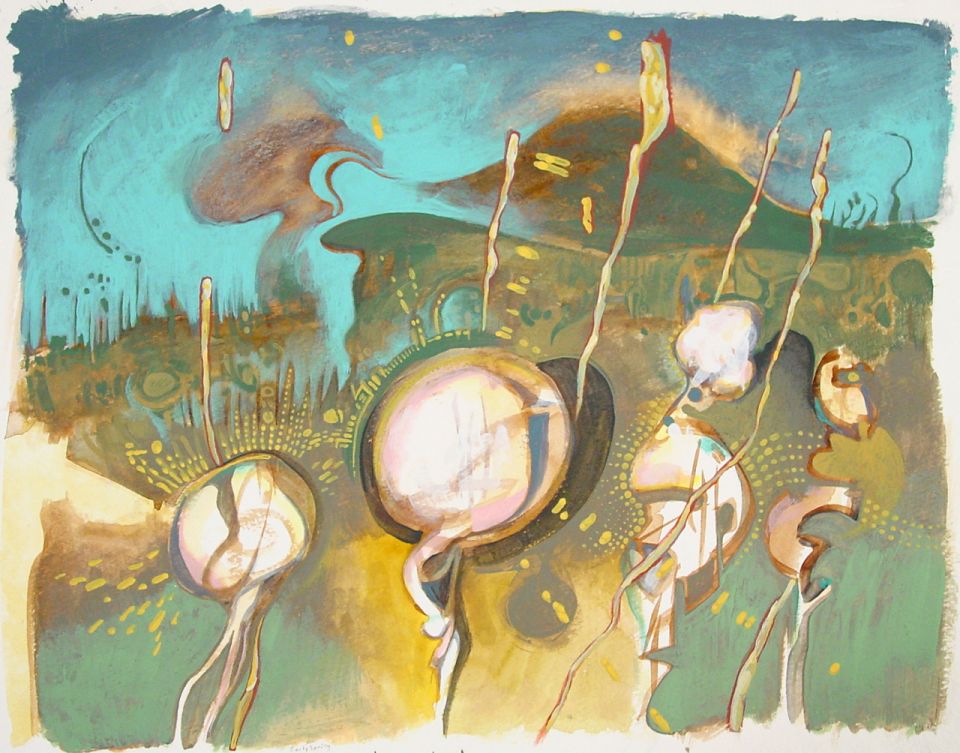About: Writings / Essays
-
Some Notes on a Painting Process





Some samples of my "stealing color" process.
If you're an artist, perhaps you're as obsessive about color as I am. Maybe you're even more obsessive! What follows is a description of some of the decision-making processes that led me to develop a free online application that helps artists analyze colors so that they can be methodically mixed. It involves using a triple-beam balance, some digital media, and some other things. If you're an art educator, this can help expose your students to some of the fundamental principles of color theory. I hope you'll find this to be of interest!
Not too long ago, I abandoned oil painting in lieu of this other method, which I find curious and preferable. The commercial production of colors is heavily dependent on mathematics. The process, which I call "stealing color," involves a camera for "stealing" color relationships that occur in the natural world. I photograph color relationships, sometimes modify the colors and then export swatches from these images. The photos are exported from image editing software such as Photoshop. I can extrapolate the color formulas from an exported file and use them to mix any color that I want, using water-based paint.
Many tempera paints are formulated on CMYK (printing ink - primary colors). So, this process works reasonably well. I modified the algorithm for commercial house paint. I use the tempera for small paintings and the commercial acrylic latex paint for larger works such as murals. These color formulations eventually allow me to work more in the manner of drawing, with carefully selected colors. I have used this process for some social commentary works (shown above).
Using the printed color swatches, I can mix up the exact color using a triple beam balance. There is minimal guesswork involved. This method gives a very accurate approximation, and if done correctly, only slight modifications to the colors are needed.
This process speaks to anyone with an artistic sensibility, in my opinion. I don't know any artist that doesn't become a bit obsessive about mixing colors - or at least becomes utterly enamored with specific color harmonies. The development of this process has taken years. It started as a practice of calculating each color by hand. I then moved on to excel spreadsheets. In its current form, my stealing color algorithm exists as a mini-app on my website. I made it possible for anyone to use it if they want to. You have to know a little bit about image file types, but the instructions are right there. I still use it quite often. There are variations for tempera, acrylic house paint, and acrylic artist's paint. Try it out and see if you like it.
The examples shown here are samples of some artworks that have been produced using this method.
The application is located here >>
Note: The application is designed for desktop devices. A mobile-friendly modification is planned for the future. File types that come from mobile phones and tablets are not yet compatible with this software. Post a question or comment.
Tom Estlack | Subscribe
Subscribe-
-
Search - About
-
Documentation
Writings / Essays
- Artist Bio
- transcript for Advice for Young Executives
- Great Music Together
- About Baby Index 107 56
- Ishtar - Middle Eastern Bellydance Music
- About Codorus Creek Detritus
- Istanburgh
- Some Notes on a Painting Process
- Long Lost Friend
- Aspects of Late Postmodernism
- Brain of the City
- About Populace Fragments
- Yes Thank You - Curatorial Statement


